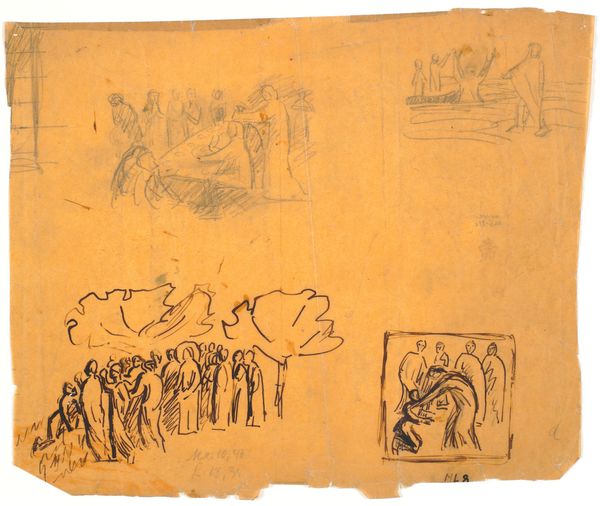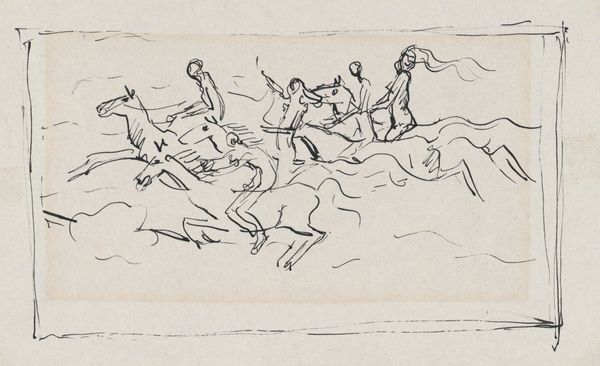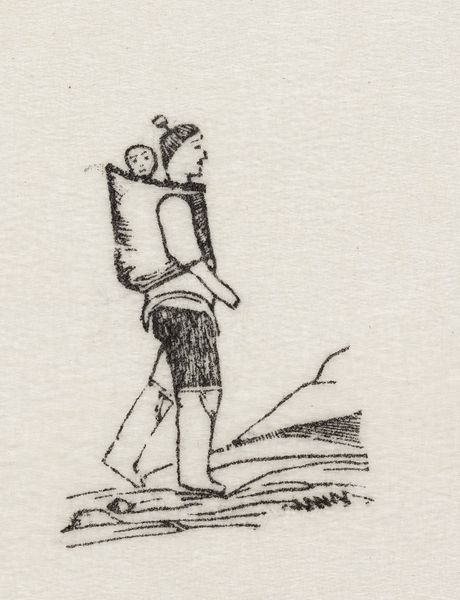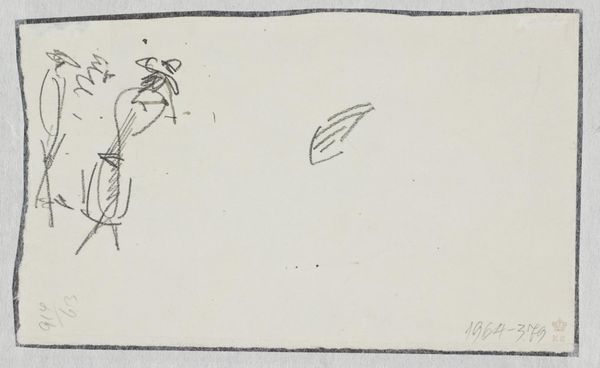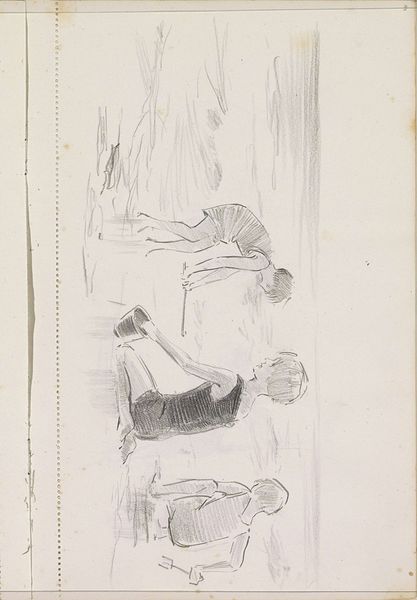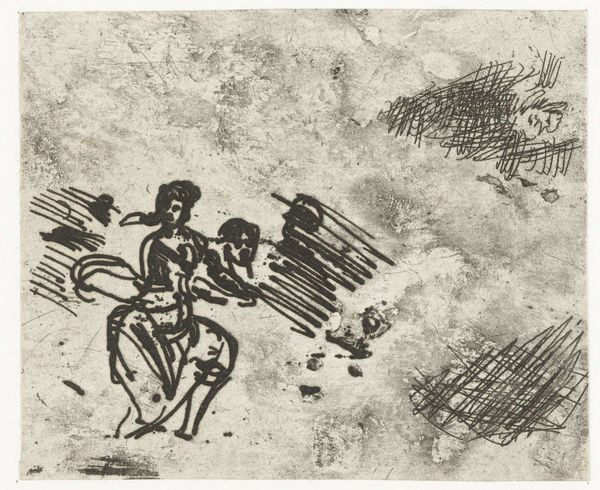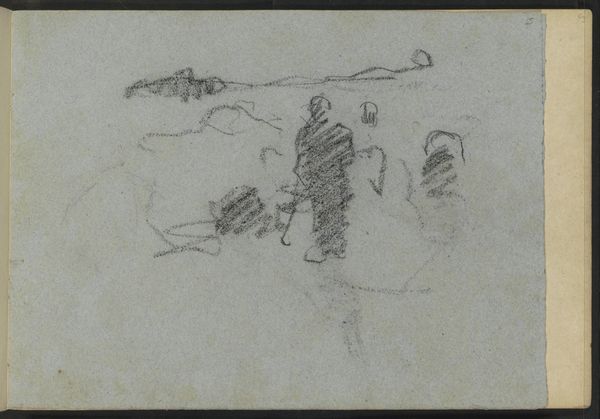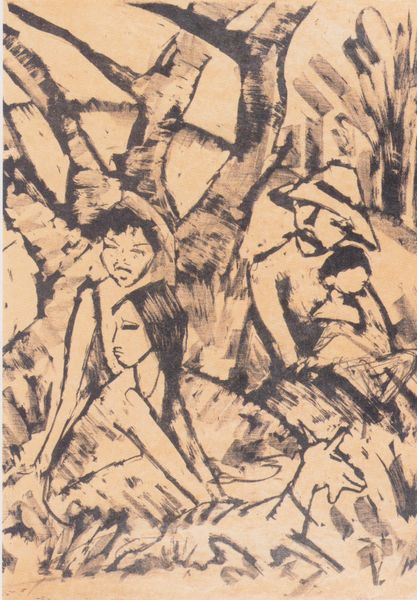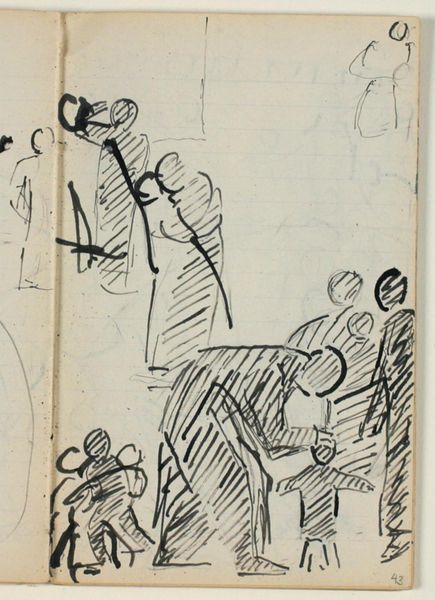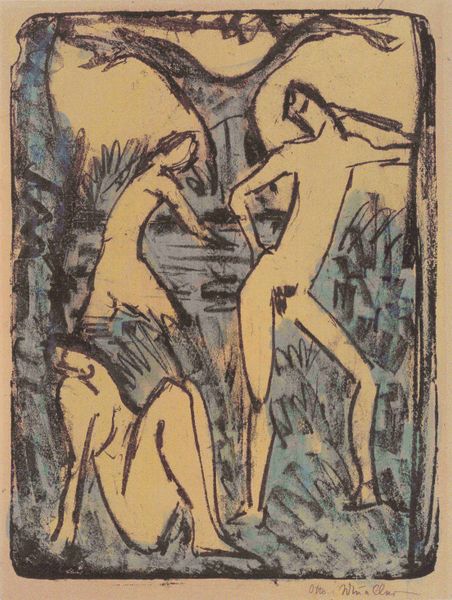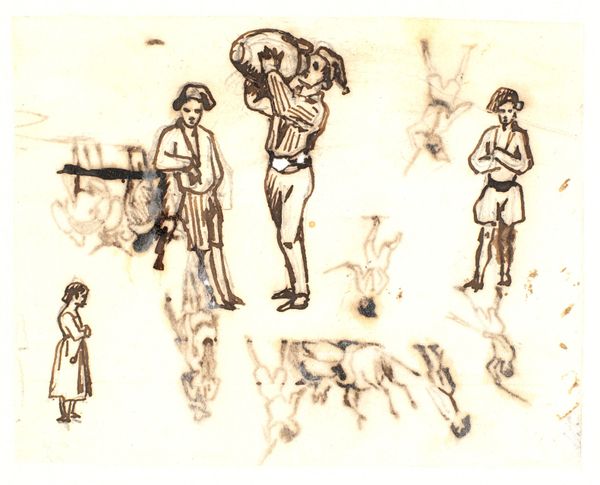
Kompositionsudkast til maleriet "Den blinde ved vejen råber efter Kristus", 1910 1909 - 1910
0:00
0:00
drawing, ink, pen
#
drawing
#
ink drawing
#
narrative-art
#
ink painting
#
pen sketch
#
figuration
#
ink
#
symbolism
#
pen
Dimensions: 76 mm (height) x 338 mm (width) (bladmaal)
Curator: Niels Larsen Stevns created this ink and pen drawing, a compositional sketch entitled "Kompositionsudkast til maleriet 'Den blinde ved vejen råber efter Kristus'" sometime between 1909 and 1910. Editor: My first impression is one of urgency. The figures seem to be almost vibrating with energy. There’s an interesting dichotomy with some figures huddled while others stretch or reach out. It’s a rather sparse composition, though. Curator: That tension you perceive resonates deeply within its socio-political context. The figure of the blind man is not simply a biblical character, but an embodiment of marginalization, crying out for recognition within a society marked by disparity and perhaps also personal angst on the part of Stevns, who became blind himself. His vision was failing during the time this was composed. Editor: I’m interested in that detail regarding Stevns’s failing vision. It reframes the narrative as deeply personal. In Christian iconography, blindness has symbolic weight: spiritual blindness, the inability to ‘see’ the truth. Given Stevns’s circumstance, this is almost an active attempt at deciphering truth, rendered in the frantic scribbles. Curator: Absolutely. And consider the power dynamics. A crowd presses around Christ, some passively observing, others actively seeking. This composition captures the spectrum of engagement and disengagement with social justice and divine intervention. There is even some evidence that Stevns adopted socialist principles as part of his political ideology. Editor: It does also make me think about other symbols around perception: the halo, of course, even the upraised hand is a type of beacon or symbolic plea. Here the absence of crispness almost suggests fading memory. Curator: Exactly. Stevns grapples with themes that remain painfully relevant, the call for empathy in the face of suffering. And these ink strokes, raw and immediate, feel less like sketches and more like desperate pleas for change. The entire piece exists as a metaphor for a world still struggling to see clearly. Editor: And the raw nature of the sketch becomes part of the symbol, doesn't it? It mirrors a rawness, as you said, that gives the piece a vitality beyond just simple illustration of a religious scene. It is almost unsettling in how relevant it is. Curator: Indeed. We began seeing it as historical and religious in nature; yet in closing we can more deeply appreciate its persistent appeal for our contemporary struggles with inequality.
Comments
No comments
Be the first to comment and join the conversation on the ultimate creative platform.
